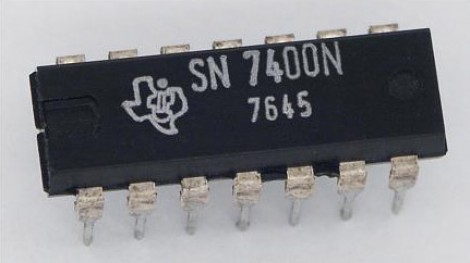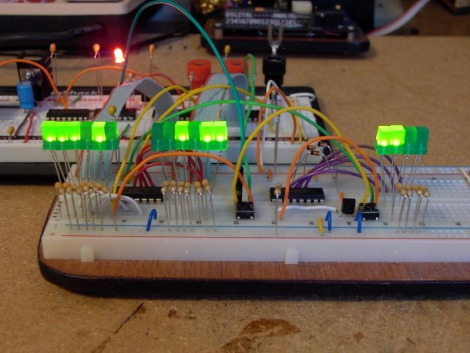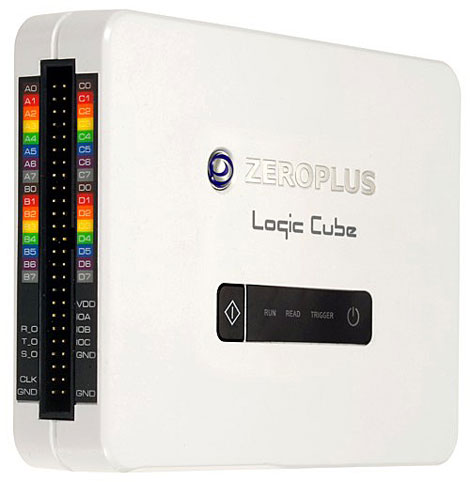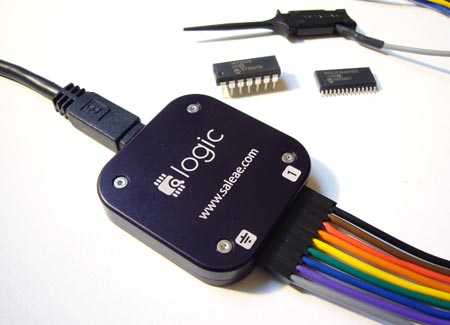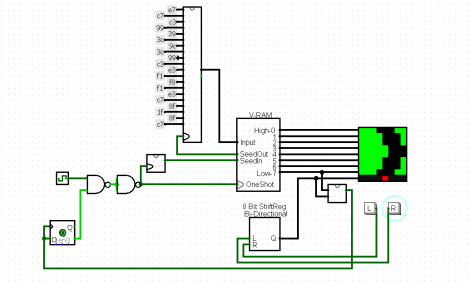
[Caleb] is hard at work on a driving game based on 7400 series logic chips. This will be his entry in the Open 7400 Logic Competition, and it really outlines why this contest is especially tricky.
The concept behind the game is quite simple. You’re the driver of a car (the red dot at the bottom of the display square seen above) and need to navigate the curves in the road as you drive along. It’s the same game as we saw played on receipt paper back in June. [Caleb’s] using and LED matrix as the display, and we’re confident that if we grabbed our favorite microcontroller we could have this up and running on an 8×8 bi-color display in an afternoon. But doing it without the crutch of a programmable chip really brings out the clever engineer inside of you.
The circuit seen above is a Logisim proof-of-concept that [Caleb] went on to test on the breadboard. He thought he had everything figured out until he realized that his Data Flip-Flops were very occasionally not powering up in the same state as he predicted. Don’t worry, he found a solution to the problem. But we can’t wait to see what other hurdles he encounters as he pushes on toward completing the project.

